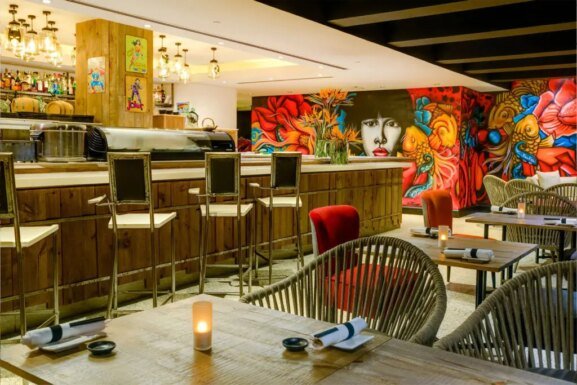Hiking with Stemware at the Big Sur Food & Wine Festival
Big Sur, California, is four hours south of Napa and five hours north of Los Angeles, and appears ex nihilo, all ocean clear to the horizon, and then suddenly: a black mountain range jutting from an azure sea. The Santa Lucias are draped with green redwoods and spiky sagebrush, and carved into its severe mountainside, 300 feet over the misty, lapping ocean, is Route 1.
Today, Big Sur remains isolated, which for locals is its allure, but which also makes it vulnerable. Like much of California, it is prone annually to devastating wildfires. When they are at last extinguished, mudslides follow. Accordingly, emergency services are at times more cherished than even the redwoods. Because the only way in or out is Route 1, wildfires along the highway leading in or out of Big Sur alienate it further. The Big Sur Food & Wine Foundation, a 501c3 nonprofit charitable trust, runs the festival and donates its proceeds to those first responders who protect the land as well as arts and educational organizations in the community.
On a clear Friday in November, at the Big Sur Food & Wine Festival, we took in every bit of the town’s secret, scenic beauty: the black road, the green field, the thin horizon dividing two tantalizing shades of blue, the Pacific and a big California sky. We pondered them at length because shuttle buses were running behind, and with them, all the stemware (and half the attendees) for an event called “Hiking with Stemware.”
We would walk that morning on private coastal land fenced off from the public. The festival is famous for finding breathtaking vistas few have ever seen, and this one especially had everyone eager to get going. “I’ve lived here my whole life and never seen it,” said one anticipant attendee.
Thirsty though we were, no one complained about the delay, which somehow made the proceedings all the more charming—a dramatic pause before the big reveal. The festival is entirely volunteer run; every dime flows right back into the community. As such, despite the opulence of the gathering, all the good wine and meals prepared by a battalion of award-winning chefs, the entire weekend feels as though its planners are just barely one step ahead of every event, Indiana Jones-charging across a collapsing stone floor. Somehow, they manage to pull it off with panache.
Given its November, immediately post-harvest timing, it’s also a festival known for attracting area winemakers at a time when they are in a moment of pause, unguardedly heaving a sigh of satisfaction at another harvest in the books after months of early mornings and long nights. What a place to take that breath.
When the shuttle vans finally arrive, volunteers race to extract the stemware. After the gates opened, another volunteer, handing out glasses of Roederer Estate Brut Rosé, warned me and each of the 34 guests, this was an active cow pasture and to watch our steps. We followed this advice, which seemed sound (and proved, ultimately, warranted) as we worked our way down the gentle slope toward the cliff face overlooking the sea.
Every wine-civilian attendee I spoke with had traveled from across the country to get there (besides the local winemakers, the festival has become an annual, low-key convergence of sommeliers and other members of the trade). All were experienced wine festivalgoers. Uniformly, they called this one the best.
“Partly, it’s the people who put it on,” says Jenna Congdon, a sommelier at Martine’s Wines, an importer based in Northern California, and a festival volunteer. “They’re all locals, so there’s just so much heart behind it, so much soul. That translates on every level. The enjoyment is beyond the hedonistic.” It is also, she says, a lot of work to deliver the level of service befitting the events. There is virtually no cellular service. “That’s a huge challenge if anything goes wrong—for a moment we thought we might be hiking without stemware,” she joked.
At the hike’s first stop, Tajha Sophia Chappellet-Lanier, a festival volunteer, talked us through the history of the land on which we now rod. “Notley’s Landing was one of the key places along the Big Sur coast where ships were able to come in and drop off goods for the homesteaders while picking up lumber to take away and sell,” she said. A small settlement grew from this. With the opening of Route 1, however, it was soon abandoned.
When the group hiked on, a few of us lingered. We looked down the side of the cliff, at the tiny pirate’s cove below, a little patch of sand with waves washing in and out. The only thing missing was a treasure chest complete with sun-bleached bones and a skull. “Can you imagine people hauling supplies up that?” someone asked. We took it in as best we could. That little beach, the dark rocks rising from teal water—it was private property now. We might never see it again.
This article originally appeared in the June/July 2023 issue of Wine Enthusiast magazine. Click here to subscribe today!


